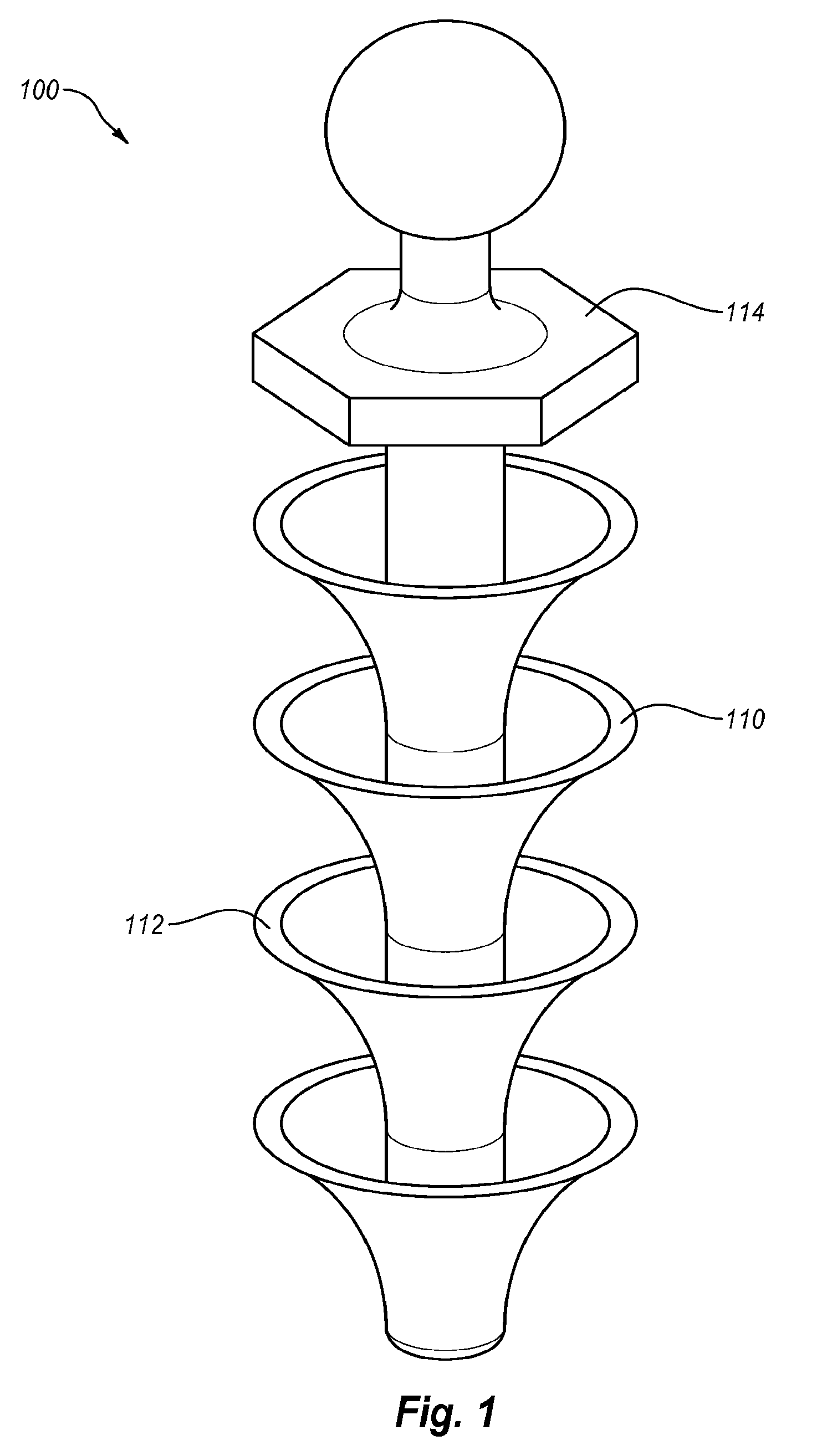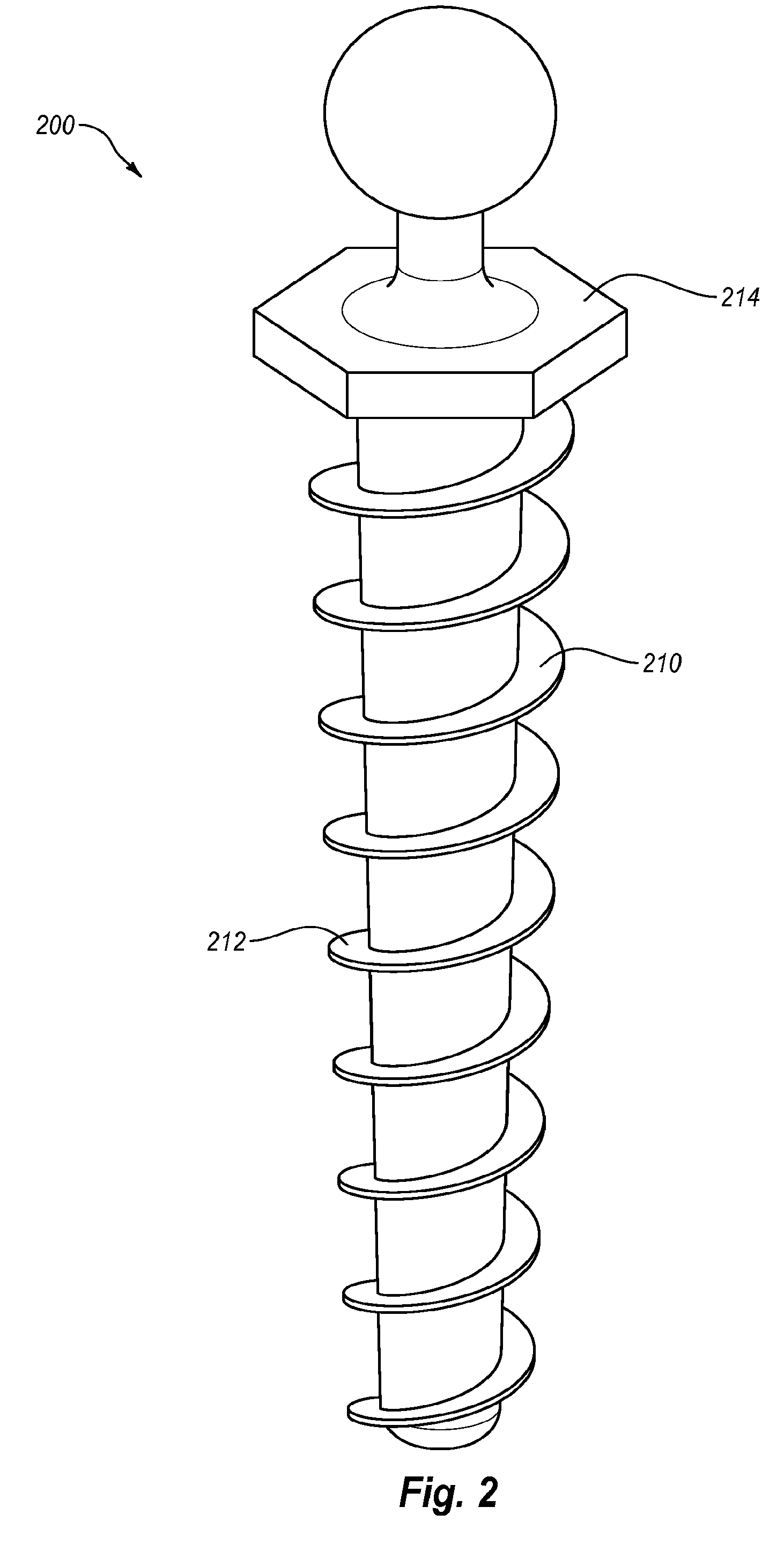Dental implant using a polymeric post
a polymer post and dental implant technology, applied in the field of dental implants, can solve the problems of more than one tooth only exacerbated these problems, bone surrounding the tooth begins to deteriorate, and the eventual loss of the sock
- Summary
- Abstract
- Description
- Claims
- Application Information
AI Technical Summary
Benefits of technology
Problems solved by technology
Method used
Image
Examples
Embodiment Construction
[0018]With reference now to the drawings, the preferred embodiment of the polymeric dental implants is herein described. Plastics have an ability to be strong and deform without fracturing under stress. This inherent ability of some polymers to deform (flex / stretch) instead of fracturing is ideal for both an implant post and prosthetic. Plastics that are too brittle can be modified by plasticizers to impart more elasticity to the polymer in order to make them useful as an ideal implant material. Usable plastics can be a thermoplastic or a thermoset plastic. These polymers can be comprised of straight chain, co-polymeric, block or any combination of polymers incorporated into the same mass. Plastics can be chosen from the group of polymers such as: polyacrylates, polyamide-imide, phenolic, nylon, nitrile resins, fluoropolymers, copolyvidones (copovidones), epoxy, melamine-formaldehyde, diallyl phthalate, acetal, coumarone-indene, acrylics, acrylonitrile-butadiene-styrene, alkyds, cel...
PUM
 Login to View More
Login to View More Abstract
Description
Claims
Application Information
 Login to View More
Login to View More - R&D
- Intellectual Property
- Life Sciences
- Materials
- Tech Scout
- Unparalleled Data Quality
- Higher Quality Content
- 60% Fewer Hallucinations
Browse by: Latest US Patents, China's latest patents, Technical Efficacy Thesaurus, Application Domain, Technology Topic, Popular Technical Reports.
© 2025 PatSnap. All rights reserved.Legal|Privacy policy|Modern Slavery Act Transparency Statement|Sitemap|About US| Contact US: help@patsnap.com



